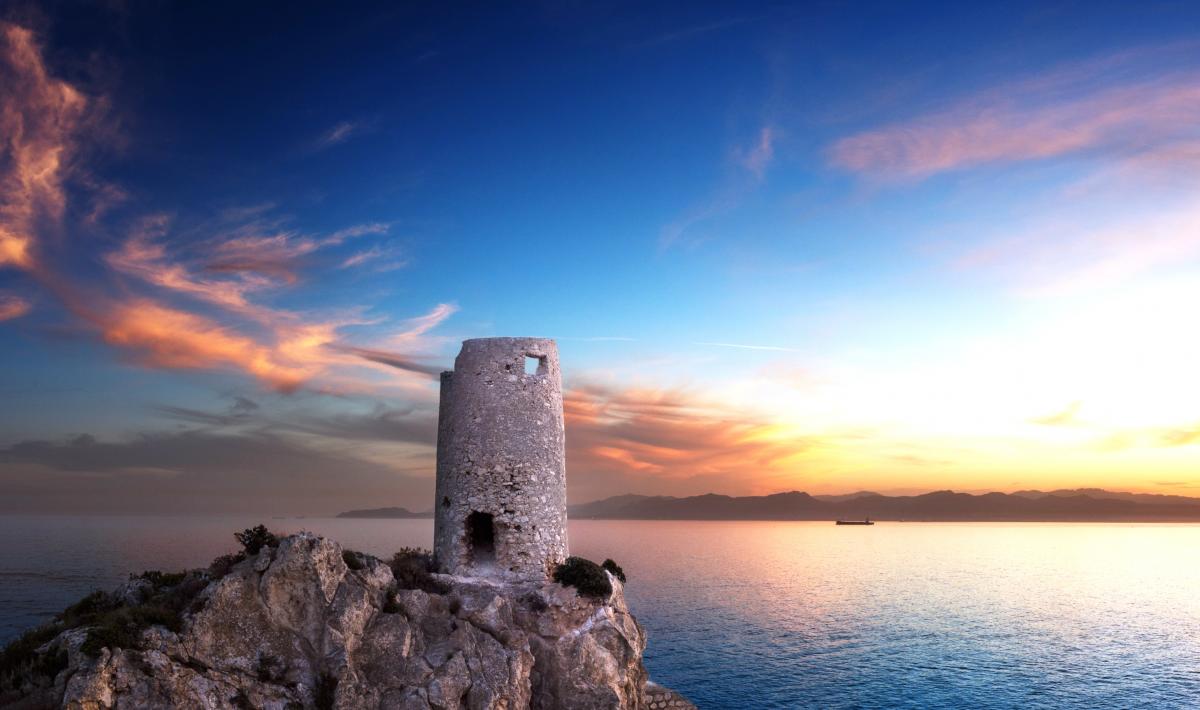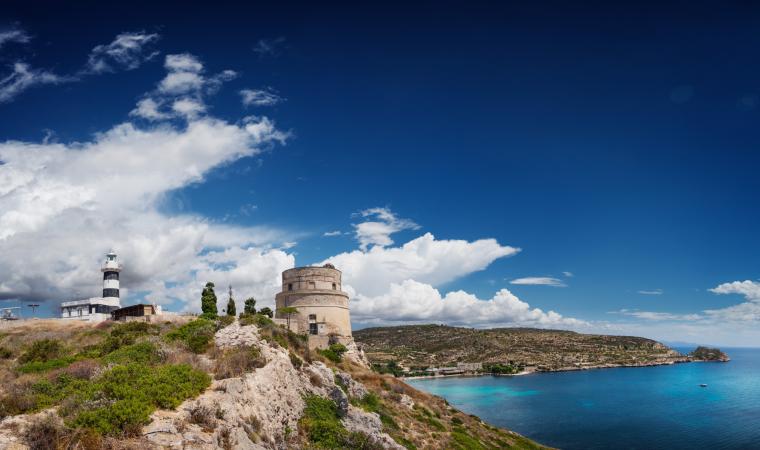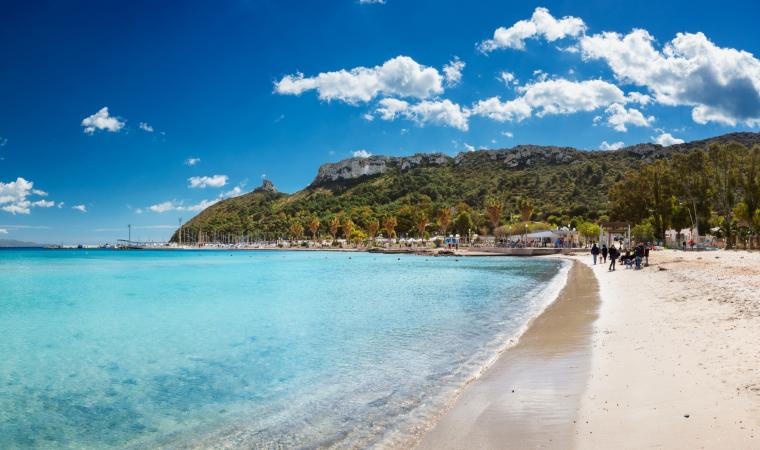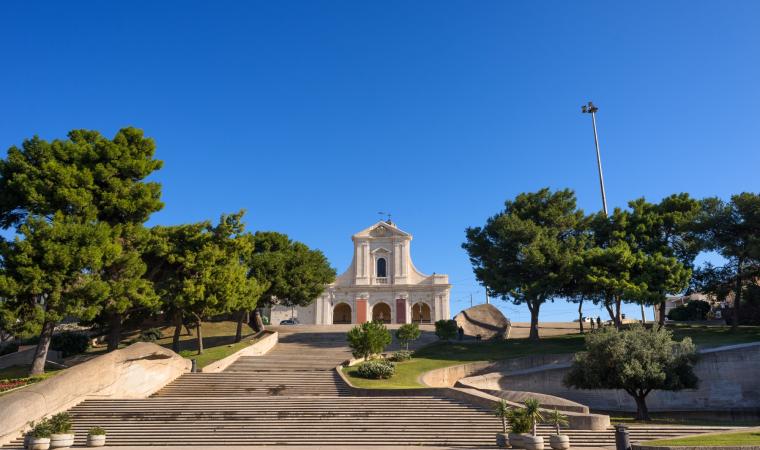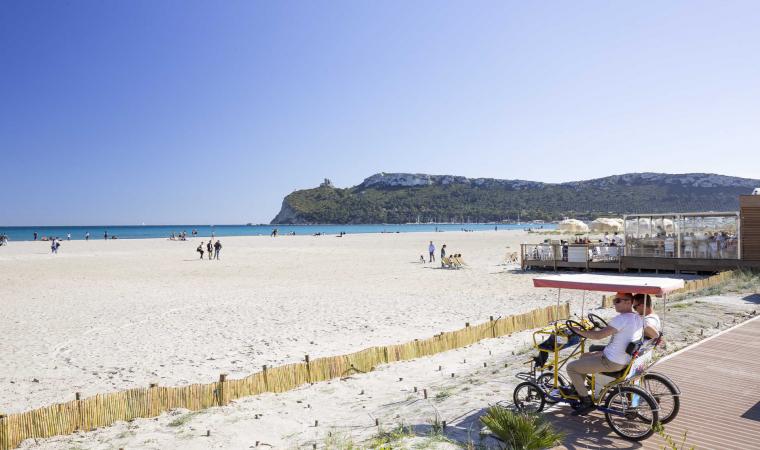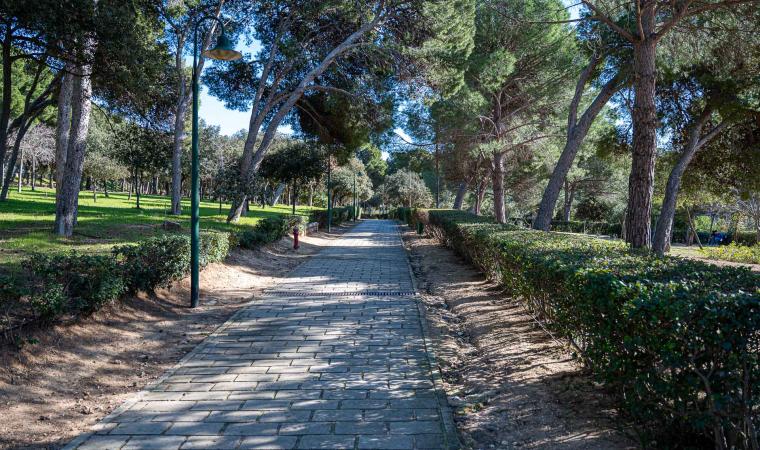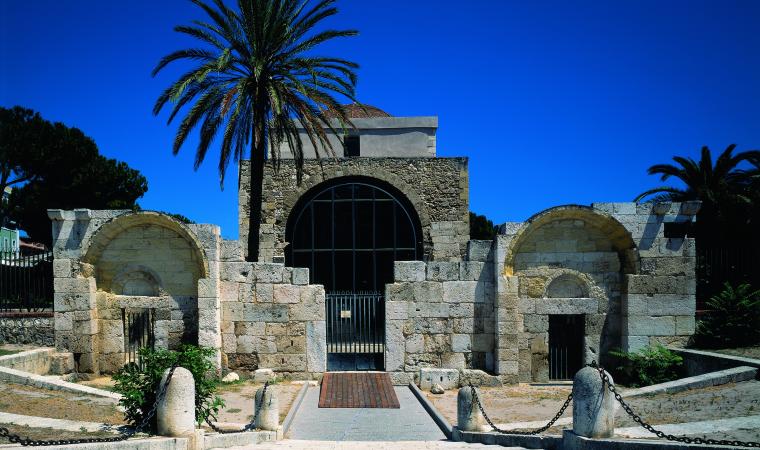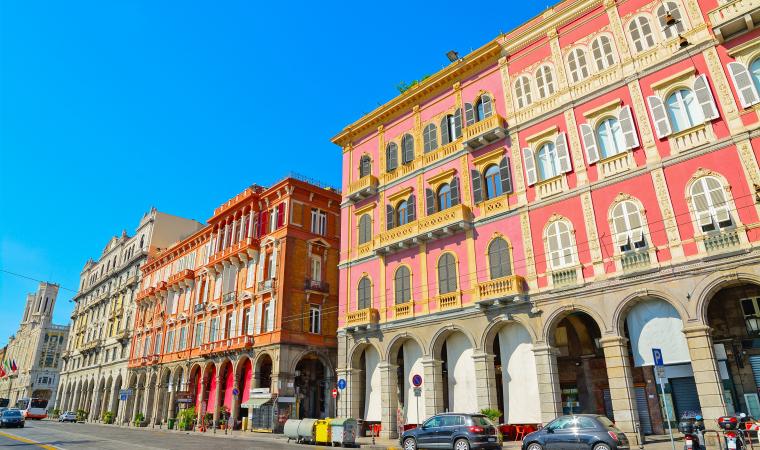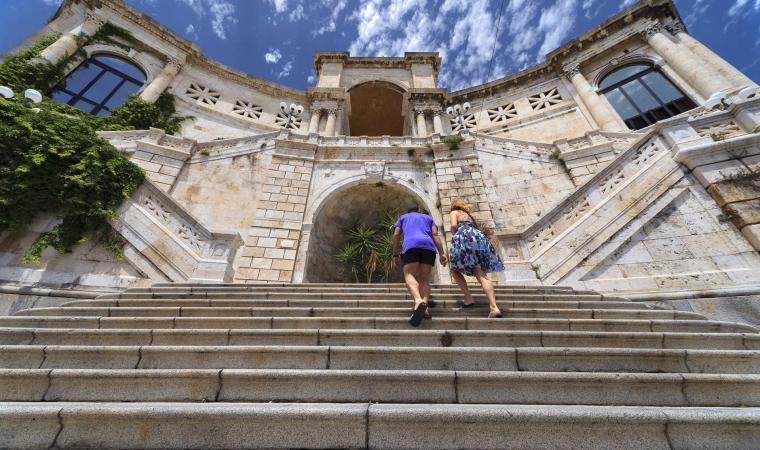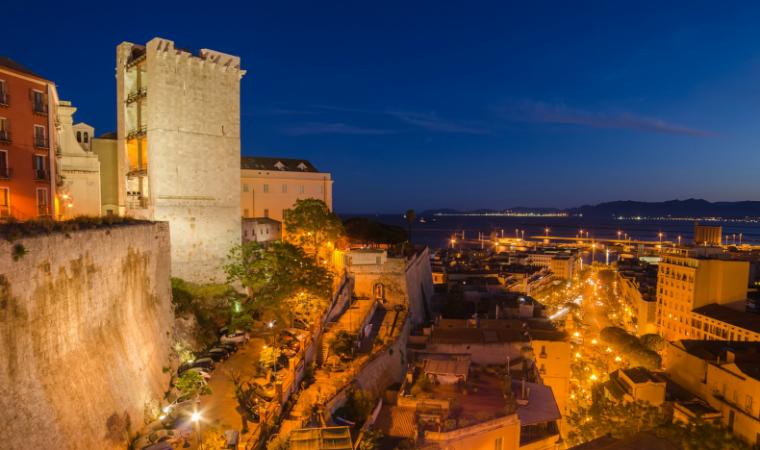It is small, perched on a rocky outcrop, and only accessible from one side, but perfectly placed visually, compared to the other coastal towers of the Golfo degli Angeli. The only function the Tower of Prezzemolo could have had was as a watchtower, yet it has a long and glorious history, during which its name was often changed. In the official documents, it is identified as the tower of Cape Bernat – from the name of the rocky outcrop on which it stands -, the tower of Safa, from Santo Stefano del Lazzaretto, Torre Vecchia (Old Tower) and the tower of Prajola. For the Spaniards, who built it after the first half of the 16th century, it was the torrezilla, meaning ‘the small tower’. Today, quite ironically, almost by the law of retaliation, it steals its name from another building that no longer exists and that was located in the nearby cape of Cala Fighera.
The little tower was part of a of coastal fortification complex built between the hills of Sant'Elia and San Bartolomeo during the sixteenth century, to protect Cagliari from the incursions of pirates and Muslim corsairs. In particular, the Tower of Prezzemolo watched over the beach below, the area of the Lazaret and the nearby salt pans. Already towards the end of the 16th and beginning of the 17th century, it was renovated and, when the nearby Tower of Calamosca became fully operational, it was abandoned and disappeared from official documents until 1772. It was then rearmed as a station for riflemen and to support a light infantry company. However, its greatest moment of glory dates back to 1793, when it warded off a French raid, with the aid of a battery of cannons, preventing them from landing on the beach. The ships, which were also hindered by the northwesterly wind, were then permanently pushed away to the west, near the Foxi Tower. After that, the tower was abandoned, never to be operational again, and was not renovated until 1916, while the rock it stands upon was reinforced in the second half of the 20th century to prevent it from crumbling.
The construction is shaped like a truncated cone, currently 11 metres high and with a diameter of four and a half metres. When it was active, it only accommodated two tower keepers. An open hatch in the dome allowed access to the outdoor terrace, originally covered by a ‘crescent’ or semi-circular roof made of reeds and tiles. The only opening is the entrance, built with abutments and a stone architrave.
From its summit, 45 metres above the sea, it was possible to see as far as 23 kilometres away. Not surprisingly, it is now an evocative panoramic viewpoint, especially at sunset, when the scenery on the western side of the Golfo degli Angeli will leave you breathless. From the tower, you can go on foot or by bike to two other military constructions on the hill: the C-135 anti-aircraft battery, from the 1930s, and the Forte di Sant’Elia, known as the Fortino di Sant’Ignazio, dating back to the end of the 18th century.

